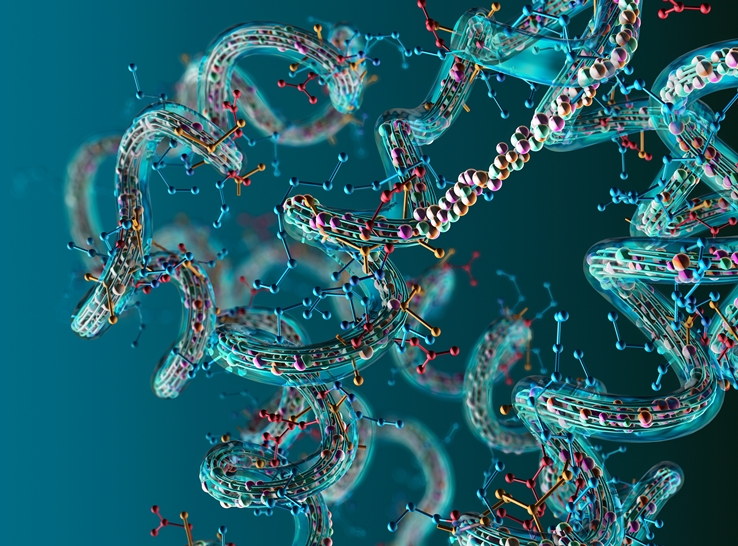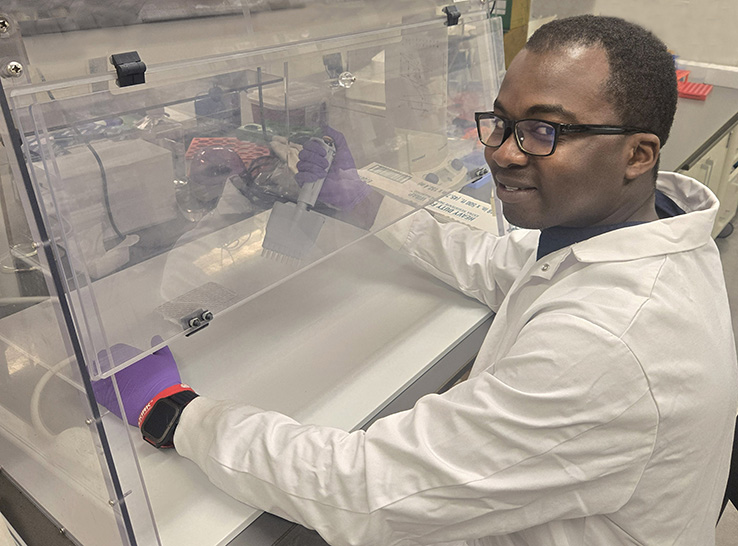Improved use of molecular biology and vaccination approaches can go a long way to help the poultry industry better understand and control coccidiosis challenges.
Mark Jenkins, PhD, a leading poultry microbiologist with USDA’s Agricultural Research Service, highlighted this opportunity in a presentation at the 2024 Poultry Science Association meeting.
Power of molecular biology
Avian coccidiosis control largely depends on understanding the epidemiology of the disease and the causative protozoan Eimeria, Jenkins said.
Molecular biology can help by enabling more precise investigation and assessment of Eimeria oocysts and avian coccidiosis.
This precise investigation includes helping researchers and the poultry industry develop and utilize markers for drug-resistant Eimeria strains, assess the genetic basis for virulence and determine the intestinal site-specificity of coccidiosis challenges — all of which can improve control strategies.
A foundational advantage underlying these opportunities for progress is the ability of molecular biology approaches to distinguish various Eimeria strains, Jenkins explained.
“Aside from Eimeria maxima, most Eimeria species cannot be differentiated microscopically,” he said. Molecular analysis makes this differentiation possible by identifying known sequence differences that indicate different species.
To illustrate this point, Jenkins showed a slide of an oocyst isolated from fecal material. “You can see that, when we’ve done molecular analysis of this sample, we find four or five different species,” he said. “But without molecular analysis, you’d be hard-pressed to distinguish different species other than E. maxima, which is the largest and easiest to identify.”
Among the other Eimeria species, average size and width are too similar, with too much overlap, to allow for accurate differentiation microscopically.
“This example underscores why molecular biology assessment based on sequence differences of different species is very useful,” Jenkins explained.
Useful insights
Molecular analysis has been used in efforts for typing avian influenza virus, Newcastle disease virus and other high-profile viruses, he noted. “We can use the same technology for typing Eimeria strains to look for sequence identity of the various species.”
Using molecular biology to determine the concentration and species composition of Eimeria in poultry litter, for example, can be advantageous for many reasons, Jenkins said. A few top reasons are listed below:
- An overabundance of a single Eimeria species may reflect drug resistance.
- An increase in an Eimeria species (e.g., maxima) may reflect immunovariability.
- An increase in Eimeria oocyst concentrations may corroborate the presence of coccidiosis or necrotic enteritis.
Jenkins noted that molecular biology can also help answer the question, “Are more virulent strains emerging?”
“If you have a problem on a farm, you could isolate the oocysts and look for sequence patterns that may reflect different populations that are rising and more virulent. Using that information, you can ask, is there a correlation between the presence of these strains and the severity of coccidiosis or necrotic enteritis?”
Enhancing control
In practical terms, poultry companies, producers and others at the on-farm level can apply the knowledge obtained via molecular biology to assist in fine-tuning control strategies to grow chickens more profitably.
“There are several ways this information could be used,” Jenkins said. For instance, strategies could be employed to:
- Switch coccidiosis control to drugs if immunovariable strains arise.
- Use another anticoccidial drug or switch to vaccination if drug-resistant strains arise.
Jenkins elaborated by showing an example of how his team has used molecular biology recently to understand Eimeria population dynamics and use this knowledge to enhance control.
He noted that today, poultry companies often place auxiliary feed lids in a broiler house for about 7 to 10 days after chick placement to encourage chicks to start eating soon after placement. However, these auxiliary feed lids can become interspersed with fecal material as young chicks walk in and out to access the feed.
“It occurred to me while we were sampling litter that these lids had fecal material spread throughout the feed, and there’s a contrast between the fecal material and the feed. So, it makes sense that the birds would be attracted to that fecal material and possibly ingest oocysts.”
Following this thought, Jenkins and colleagues sought to determine if the fecal material in the auxiliary feed lids contained Eimeria oocysts. And if so, they asked, are these oocysts viable or infectious?
Understanding population dynamics
The investigators were able to make these determinations using an approach that included molecular biology — specifically PCR analysis. “We performed oocyst counts on the fecal material in the feed lids, then did PCR analysis to identify the different species that were present.”
Next, the researchers inoculated wanted to see if the oocysts had formed sporozoites inside which is a necessary requirement for being infectious.
The researchers found E. maxima oocysts present in virtually all the feed lids and in the adjoining litter. They also found E. acervulina, E. mitis, E. praecox and E. tenella present in the feed and the feed lids.
However, they found that only the E. acervulina and E. mitis oocysts isolated had formed sporozoites and thus were capable of causing infection in susceptible chickens.
“Those of you who have worked on cocci for a long time will know why it was only the E. acervulina and E. mitis capable of causing infection…because they’re excreted earlier than the others, and because they have a head start, they sporulate much more rapidly than the other species,” Jenkins said.
“As a result of these findings, we can now recommend to poultry producers that if you’re going to use feed lids and you’re on a vaccine program, you need to get the feed lids out of the house by 6 days, or you might have these additional species sporulating and causing infection.”
Improving methods
The current method of PCR analysis to identify species is based on many genes, Jenkins said. This method offers a very sensitive assay but is not quantitative.
To address this shortcoming, Jenkins outlined plans for his lab to develop a new metagenomics approach to determine species composition and the relative numbers of Eimeria species in any sample. Metagenomics is the study of the structure and function of nucleotide sequences isolated from microbes.
“Our goal is to use single-copy genes that we can quantitate. The hope is that metagenomics can not only reveal species composition and relevant abundance of each Eimeria species but also help to identify strains that may be immunovariable, drug-resistant or highly virulent,” Jenkins said. The researchers could then pursue identifying markers for those three traits.
Vaccination advances
Utilizing improved vaccination strategies also holds the potential to significantly improve coccidiosis outcomes, Jenkins said.
He presented findings showing that vaccination using Eimeria oocysts in gelatin beads or delivered through drinking water now has the potential to achieve 100% coverage — a key target to boost vaccine strategy effectiveness.
“The key question now is whether poultry companies will adopt these vaccination approaches,” Jenkins said.
He believes adoption will be successful if further research can show these approaches will protect against necrotic enteritis and can improve performance, either through better feed-conversion efficiencies or weight gain.
“If the poultry companies are faced with paying another salary and having a vaccinator go to all these farms, that’s an expense they would rather not incur.”
However, the anticipated advantages should outweigh that obstacle, Jenkins said. “Vaccination approaches are an important focus for further research.”






